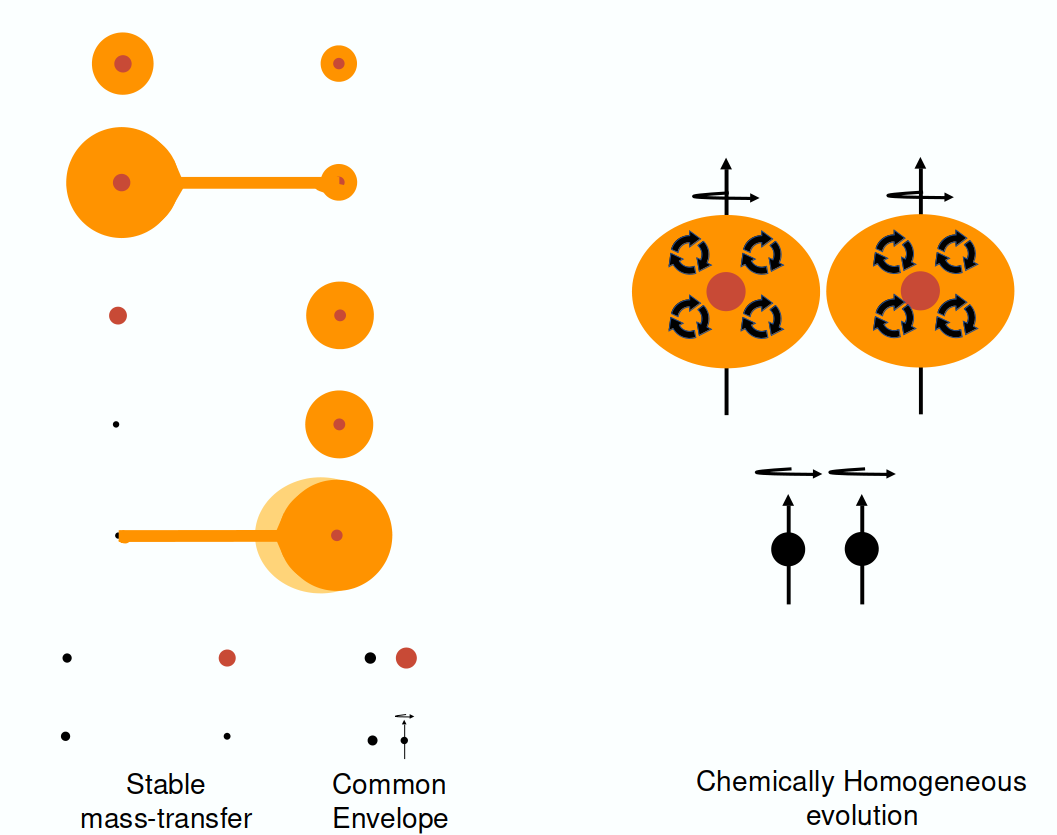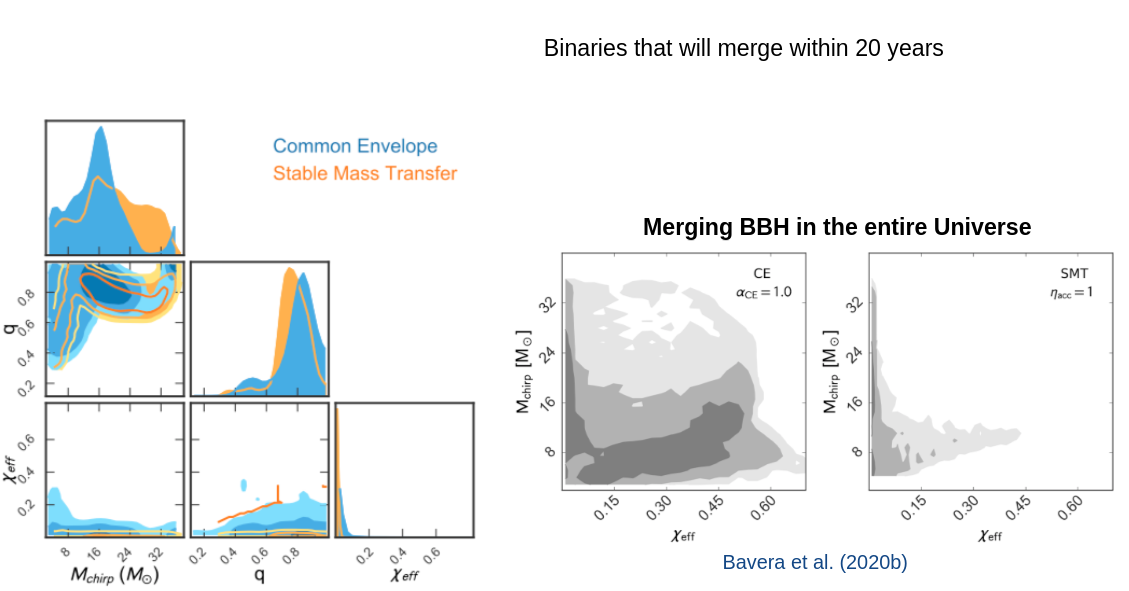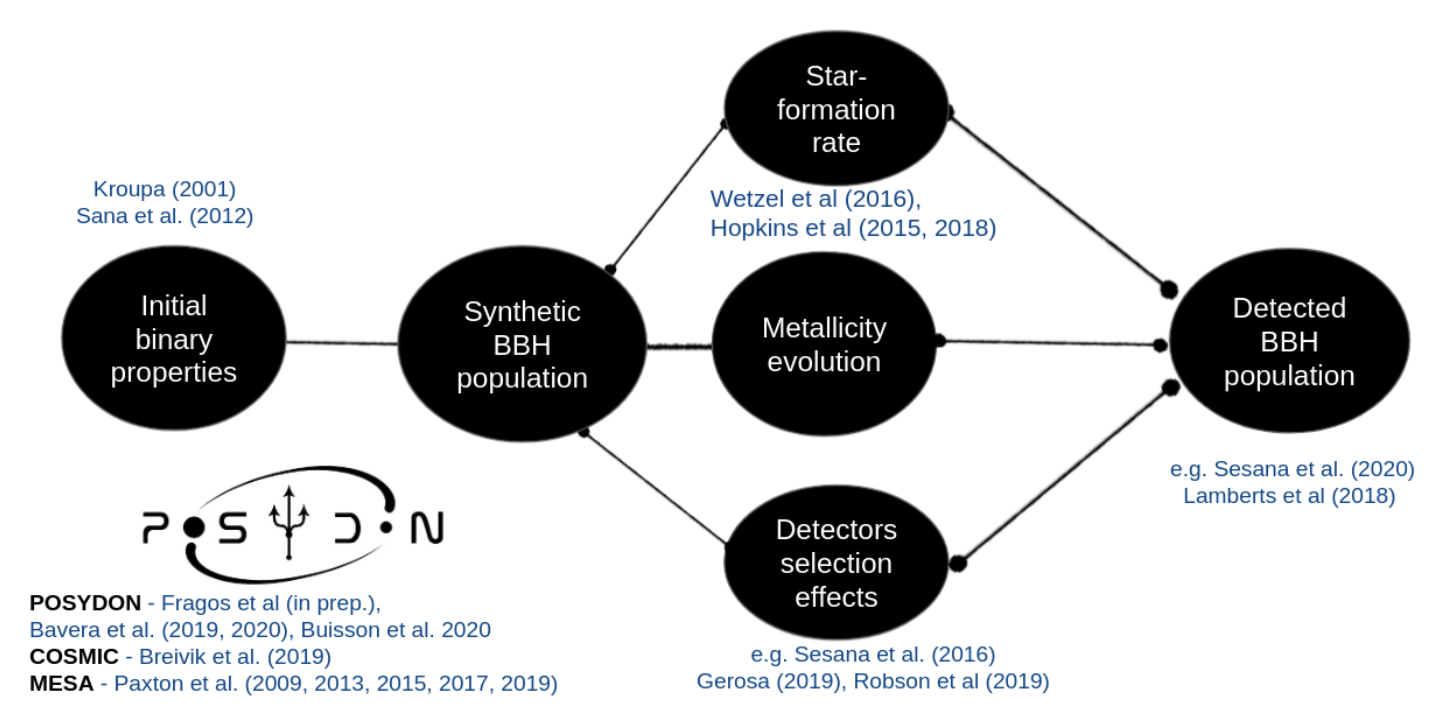Understanding the population of binary stars and their remnants is fundamental to unveil the formation of galaxies. Properties of binary systems like black holes, neutron stars, white dwarfs, and pulsars and X-ray binaries inform us about their progenitor stars, formation channels, environmental conditions, metallicities, and earlier histories of their mergers [1].
We use the next-generation population synthesis code POSYDON [2] combine with the publicly available data from one of the most advanced galaxy formation simulations, the Latte simulation [3, 4] from the Feedback in relativistic environments (FIRE-2 [5]) project, which provides spatially resolved information about the star-formation history and metallicity evolution of Milky Way-type galaxies and their environments. These synthetic catalogues of the black hole binaries are then convolved with metallicity dependent star-formation history appropriate for the Milky Way neighbourhood and Laser Interferometer Space Antenna (LISA) selections effects [6] to finally produce predictions for observable properties and merger rates [7].





